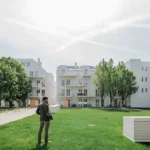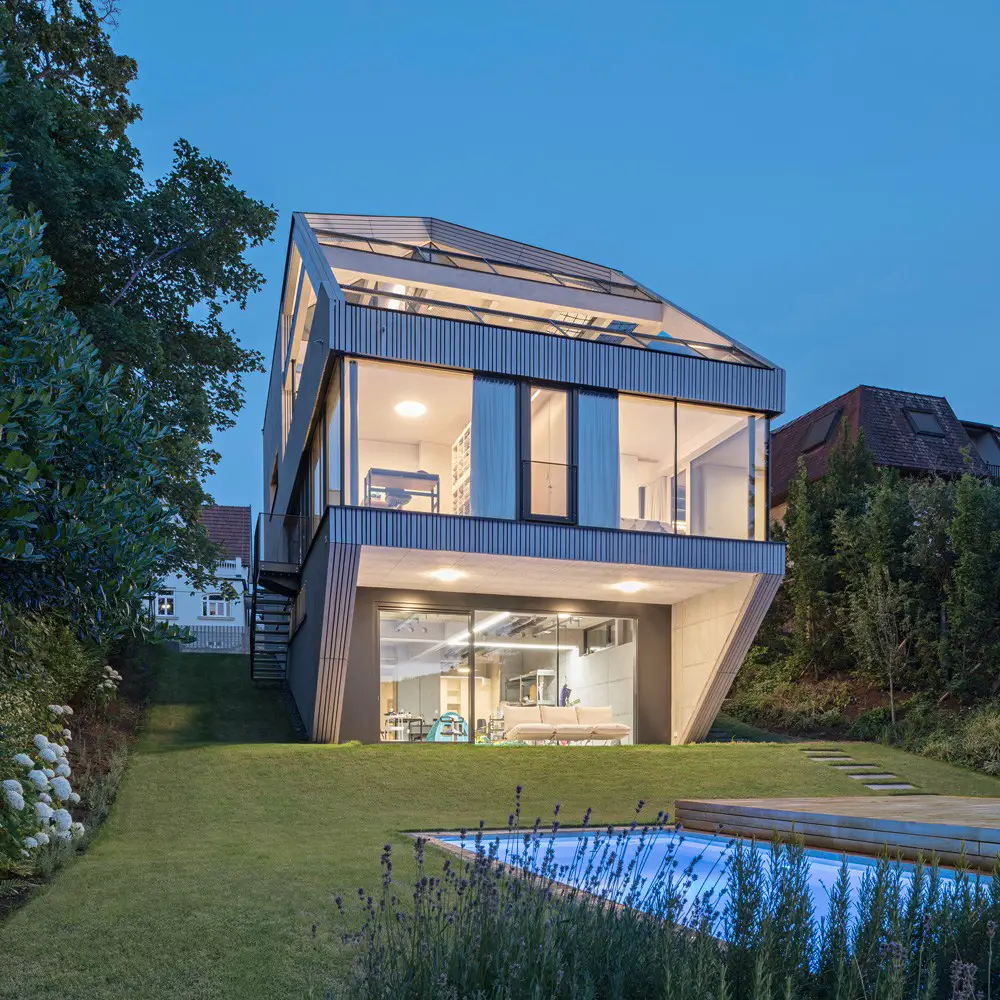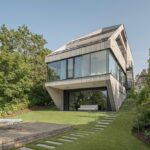21er Haus Wien, Vienna Building Renovation, Viennese Design
21er Haus Vienna, Austria : Twenty-first House
New Austrian Building – design by Architekt Krischanitz ZT GmbH
18 Aug 2012
21er Haus – Twenty-first House Vienna
Design: Architekt Krischanitz ZT GmbH
Optimal Light Effects for Extraordinary Architectural Icon
The 21er Haus (Twenty-first House) in Vienna – Renovation and extension of the former 20er Haus (Twentieth House) with OKALUX K from OKALUX
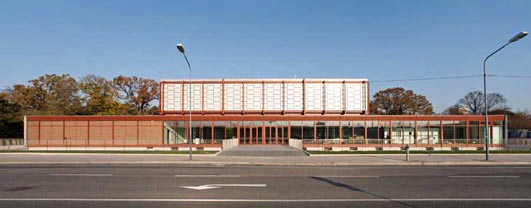
photo : Belvedere, Vienna / Wolfgang Thaler
Marktheidenfeld/Tuebingen, August 2012. The so-called 20er Haus in Vienna had been empty for nearly 10 years before it was rebuilt and reopened under the name “21er Haus” in November 2011. With his renovation, Austrian architect Adolf Krischanitz has succeeded in accentuating the building’s special appearance and has given its precise design even more expression.
Light-diffusing capillary glass from OKALUX was part of the building as early as the sixties. With the aim of achieving an identical light effect as in the past while fulfilling today’s structural-physical requirements, the architects again chose functional glass from OKALUX.
Originally, Karl Schwanzer’s building was a pavillon which had been erected to provide temporary exhibition space for the 1958 World’s Fair in Brussels. It was re-erected in Vienna in 1962 where it served as a Museum of 20th Century Art. Following this tradition, today’s 21er Haus will be used as a platform for Austrian art from 1945 to the present in an international context. The primary aim of the renovation and extension was to preserve the characteristic design of the listed building. It is not about the material or the manifest construction in itself but the space generated by the envelope of the 21er Haus. The objective was to preserve this quality, because, as Adolf Krischanitz, a scholar of Karl Schwanzer, describes his design: “Art can only breathe in an atmosphere of lightness and airiness”.
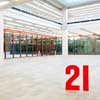
photo : Belvedere, Vienna / Michael Rausch-Schott
The aim was a modern museum and exhibition operation. That meant the building not only needed to be extended but also brought up to modern standards concerning building structure, fire protection and energy requirements. Adolf Krischanitz emphasized the building’s urbanistic presence by exposing the basement and adding a six-storey tower to the complex which serves as a signal over a long distance. The upper floor of the open museum construction provides room for varying exhibitions. The rotating exhibition space on the ground floor is distinguished by the spatial sensation resulting from the monumental centre hall and the view of the Swiss Garden. The inventory of the Fritz Wotruba Private Foundation as well as a café-restaurant with a visitor’s garden and sculpture park, wardrobes, an artist’s workshop for children, storage rooms and the installation facilities are located in the basement.
The new steel-glass façade of the 21er Haus is a replica of the original façade. Its special effect is due to, among other things, the opaque glass from OKALUX on the upper floor. Consisting of two-paned cathedral glass with glass fibre and a capillary slab in the cavity, it not only ensures a uniform diffusion of the light but also creates a unique atmosphere. The architects wanted to adapt this build-up, making it conform to today’s structural-physical requirements while at the same time achieving an identical light effect in the interior.
OKALUX K made it possible to reproduce the optical effect of Schwanzer’s design while considerably improving the Ug-value of the façade with 1.1 W/m²K (Btu/hr/ft2/°F 0,19). The translucent capillary glass offers very good thermal sun protection and a high transmission of light as well as a considerably improved heat insulation value in winter. The functional glass in the dimension of 90 x 130 cm is built up correspondingly: The outer finish consists of a 4 mm thick toughened safety glass pane of cathedral glass with an irregular, roughly hammered surface. From the outside to the inside the build-up consists of a glass fibre tissue, two 4 mm strong float glass panes with an argon gas filling of 12 mm, the outer pane of which has been fit with a heat protection layer facing the cavity. The 8 mm thick capillary slab which follows is surrounded by two inlays of glass fibre tissue; another 4 mm thick TSG pane of cathedral glass with an irregular, roughly hammered surface completes the build-up on the interior. The entire structural thickness is about 36 mm.
The light effect is intriguing; with a homogenous, diffuse incident of light appearing on both the lit as well as unlit façades. Project leader Luciano Parodi said: “The effect is exactly what we had hoped for.” This can be accredited to the capillary tubes in the cavities. The tubes diffuse the incident of light deeply into the interior evenly and without glare creating optimal light conditions in the building regardless of changing irradiation. A further plus for museums: OKALUX capillary glass protects exhibits from UV-radiation and rapid fading.
Now that the renovation and extension work have been completed, the 21er Haus does more than merely fulfil all of the requirements of a modern museum operation. With his respectful treatment of the original building fabric, Adolf Krischanitz has succeeded in giving new life to the rooms which had been shut-down until then; preserving an extraordinary piece of architectural heritage by restoring their distinctive atmosphere.
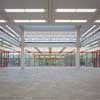
photo : Belvedere, Vienna / Wolfgang Thaler
21er Haus Wien – Building Information
Project: 21er Haus (Twenty-first House), Vienna/AT
Client: Burghauptmannschaft Österreich representing the BMWFJ (construction phase I), Vienna/AT
Belvedere: (construction phase II), Vienna/AT
Architect: Architekt Krischanitz ZT GmbH, Wien/AT
Glass: OKALUX K from OKALUX GmbH, Marktheidenfeld/DE
21er Haus Vienna images / information received 170812
Location: Verbund, Vienna
Vienna Architecture Walking Tours
Vienna Architecture – Selection
Major Viennese Architecture Projects:
Intercity Vienna
Intercity Vienna
Universität für angewandte Kunst – University of Applied Arts
University of Applied Arts Vienna
Sofitel Vienna Stephansdom
Sofitel Vienna Stephansdom
Comments / photos for the 21er Haus Wien – Twenty-first House Vienna page welcome
21er Haus Wien
Building – page
